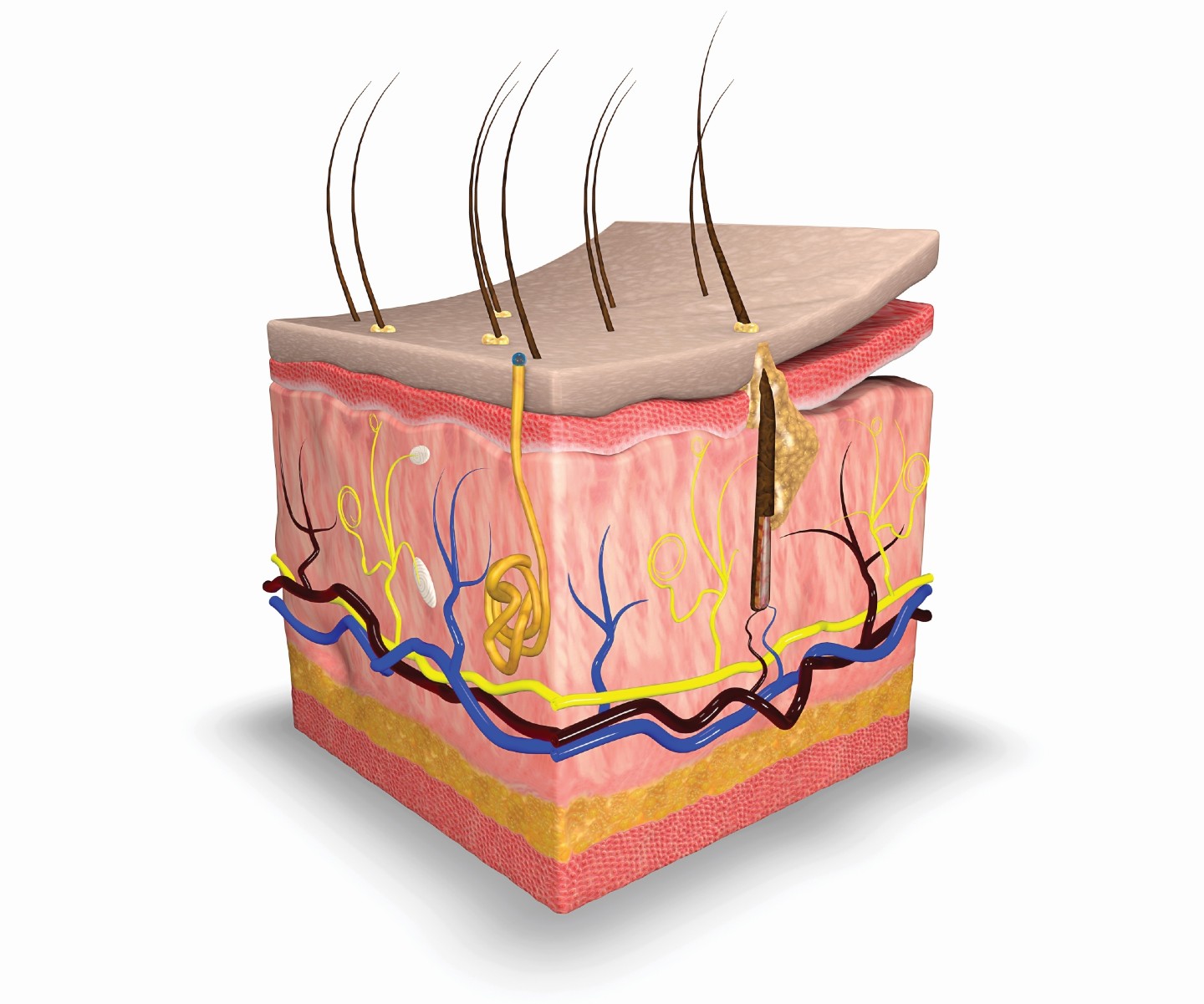How do the density and arrangement of cutaneous receptors vary on the human arm?
The skin is the largest organ in the human body. Various receptors in the skin detect different stimuli. Mechanoreceptors respond to skin stretch, cold, changes in texture, and deep pressure. Thermoreceptors sense changes in temperature, and highly specialized nociceptors respond to intense stimuli that can trigger reflex withdrawal and pain.
You have probably noticed that cutaneous receptors are not equally distributed throughout the skin. Some places on your body are more sensitive than others. This activity explores the density and arrangement of thermoreceptors in the skin on the arm.
Essential Question
How do the density and arrangement of cutaneous receptors vary on the human arm?
Thermoreceptors
Thermoreceptors are free nerve endings responsible for temperature sensation and are considered nonspecialized nerve endings. They are found in the skin, liver, skeletal muscles, and brain. Thermoreceptors are divided into low- and high-threshold receptors. The low-threshold receptors respond to temperatures between 15 °C and 45 °C. The high-threshold receptors respond to temperatures higher than 45 °C and lower than 15 °C. Studies have shown that there are 3.5 times more cold thermoreceptors than warm. What will your results show?
Additional Reading: Integumentary System
Materials (per pair)
Aluminum Probe
Blue Colored Pencil
Red Colored Pencil
Paper Towel
1 Cup Cold Water
1 Cup Warm Water
Black Stamp Pad
Grid Stamp
Cold Temperature Procedure
- Place the aluminum temperature probe in cold water for a few minutes, and allow it to cool.
- While the probe is reaching the appropriate temperature, use the grid stamp and stamp pad to stamp a grid on the back of each test subject’s hand (or the inside forearm).
- When the probe has cooled, remove it from the cold water and wipe itdry with a paper towel.
- Subject 1 sits with eyes closed, the stamped grid facing up, and arm motionless on a desk. The experimenter begins with the data table labeled “Subject 1: Back of Hand.”
- Beginning in a quadrant of the stamped grid, gently touch each grid area with the temperature probe. The probe should remain on each grid area for about 2 seconds. The test subject reports whether he/she feels a cool stimulus. Note: Remind test subjects (and students) that they are testing for temperature sensation, not for pressure sensitivity. Test subjects should report a positive response only if they perceive a temperature sensation.
- Record the results by placing a blue dot in the corresponding grid in the data table for Subject 1 below.
- Repeat Steps 5 and 6, touching each grid and recording the test subject sensation. Continue until all grid areas have been tested.
- Reverse roles and allow the experimenter to be tested, repeating Steps 1 through 7 using the “Subject 2: Back of Hand” data table.
Warm Temperature Procedure
- Place the aluminum temperature probe in warm water for a fewminutes and allow it to heat.
- Use the same grid already stamped on the subject’s hand.
- When the probe has warmed, remove it from the warm water and wipe it dry with a paper towel.
- Subject 1 sits with eyes closed, the stamped grid facing up, and arm motionless on a desk. The experimenter begins with the data table labeled “Subject 1: Back of Hand.”
- Beginning in a quadrant of the stamped grid, gently touch each grid area with the temperature probe. The probe should remain on each grid area for about 2 seconds. The test subject reports whether he/she feels a warm stimulus. Note: Remind test subjects that they are testing for temperature sensation, not for pressure sensitivity. Test subjects should report a positive response only if they perceive a temperature sensation.
- Record the results by placing a red dot in the corresponding grid in the data table for Subject 1 below.
- Repeat Steps 5 and 6, touching each grid and recording the test subject sensation. Continue until all grid areas have been tested.
- Reverse roles and allow the experimenter to be tested, repeating Steps 1 through 8 using the “Subject 2: Back of Hand” data table.

Questions
How did the arrangement of warm and cool sensations compare? Explain if the arrangement of sensations was the same for Subject 1 and Subject 2.
Explain if there was a noticeable pattern of temperature sensations for Subject 1 and Subject 2.
Would you expect the same pattern on other parts of the body, for example the face, back, or bottom of the feet? Explain your reasoning.

